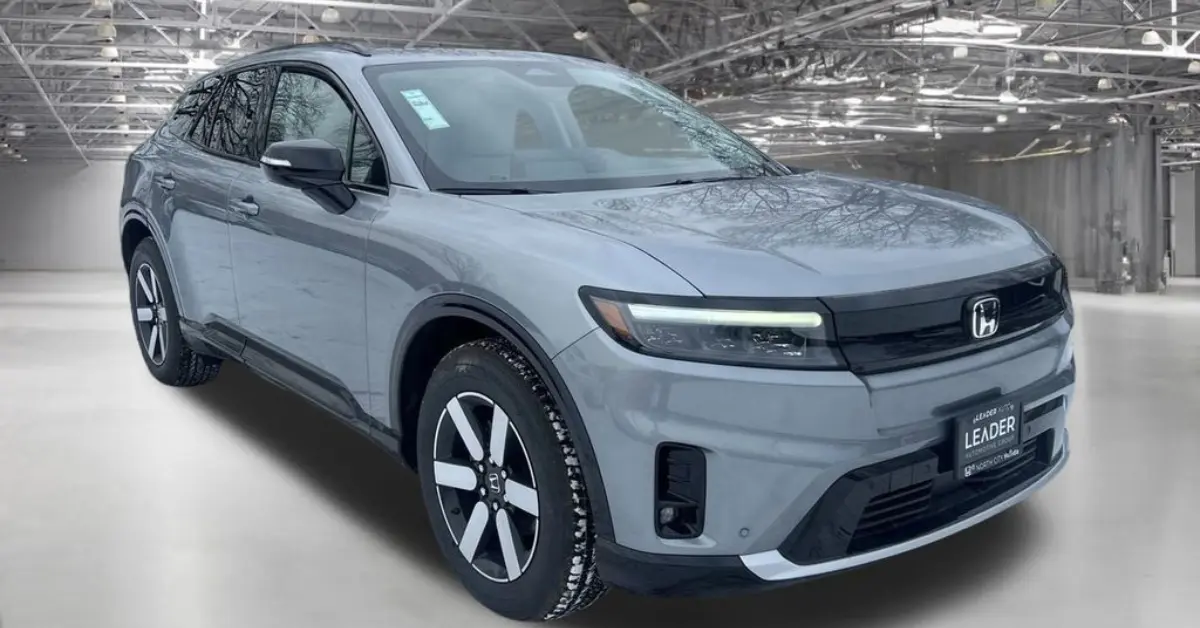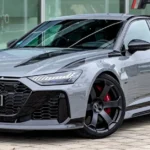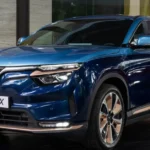The 2025 Honda Prologue is Honda’s first mass-market electric vehicle—developed in partnership with General Motors. While it marks a significant step into the EV world for Honda, the Prologue is ultimately a placeholder. It isn’t the fastest, cheapest, or most competitive electric crossover. It’s just… fine. Today, we’re taking a closer look at the new Prologue to see what it offers, what it lacks, and why it exists in its current form.
Codeveloped with GM
The Prologue was built in collaboration with General Motors, and it shares a platform and underlying technology with the Chevy Blazer EV. While the two vehicles look different on the outside, they’re nearly identical underneath—same battery architecture, similar features, and shared interior components.
Interestingly, this isn’t the first time Honda has rebadged a GM product. Back in the 1990s, Honda sold the Passport, a rebadged Isuzu Rodeo, to buy time until it developed its own SUV—the Pilot, which later became a success. The Prologue follows a similar strategy. Honda says it’s working on fully in-house EVs that will be more competitive. For now, the Prologue is a stopgap.
Performance and Value, Falling Short
On paper, the Prologue doesn’t stack up well against direct competitors—especially the Tesla Model Y.
- Base Prologue:
- Price: ~$49,000
- Power: 212 hp
- 0–60 mph: ~8 seconds
- Range: 296 miles
- Base Tesla Model Y:
- Price: ~$46,500
- 0–60 mph: 6.5 seconds
- Range: 320 miles
The top trim Prologue Elite AWD doesn’t close the gap either:
- 290 hp
- 0–60 mph: ~6 seconds
- Range: 280 miles
- Price: ~$60,000
Compare that to the Model Y Performance, which has the same range, a 0–60 time of 3.5 seconds, and a lower starting price of around $53,000.
Styling, Familiar and Safe
From the outside, the Prologue looks like a Honda. It fits into the family lineup next to the CR-V, HR-V, and Pilot. The styling is clean and relatively conservative—likely by design, to appeal to loyal Honda buyers who aren’t looking for a radical change.
One standout styling choice is the rear badge, which spells out H-O-N-D-A instead of using the traditional “H” logo. It’s a small touch aimed at making the Prologue feel more futuristic and unique among Honda models.
No Front Trunk, But Good Rear Cargo Space
Despite being an EV, the Prologue doesn’t offer a front trunk (frunk). Under the hood, it’s all mechanical components. There’s technically room for a small compartment, but Honda didn’t include one.
The rear cargo area, however, is spacious and well thought out. The space is wide, deep, and flat, with an underfloor compartment for extra storage. It’s practical for a midsize crossover.
Oddly, there’s no lock-and-close button on the power tailgate. You’ll have to wait for it to close and then lock it separately—something most other brands have streamlined.
Interior, Not Very Honda
Step inside, and the General Motors influence is obvious. The cabin layout, materials, and controls feel more like a Chevy than a Honda. Existing Honda owners may find it unfamiliar—even confusing.
Notable quirks:
- Column-mounted shifter (instead of Honda’s center-console button system)
- Windshield wiper controls are part of the turn signal stalk, operated via rotary dials
- Many core features—like headlight controls, window lock, and dome light—are buried in the infotainment screen, instead of using physical switches
This layout might be fine for first-time EV buyers, but long-time Honda drivers could find the controls unintuitive.
Final Thoughts, The Prologue is a Placeholder
The Honda Prologue isn’t meant to blow away the competition. It’s a stopgap—designed to give Honda a presence in the EV market while the company works on better, more competitive electric models.
If you’re loyal to Honda and want an EV without switching brands, the Prologue is fine. But for buyers prioritizing performance, value, range, or technology, there are better options on the market today—especially from Tesla, Hyundai, and Kia.
I am a seasoned blog writer with over three years of experience specializing in numismatics and financial news. With a sharp eye for rare and valuable coins—like old dimes, quarters, and pennies—and a deep understanding of government financial aid updates, I delivers well-researched, reliable content that helps readers stay informed and make smart money decisions. Whether you’re a coin collector or someone looking to stay ahead on finance-related news, my articles provide clear, insightful guidance tailored to your interests.



